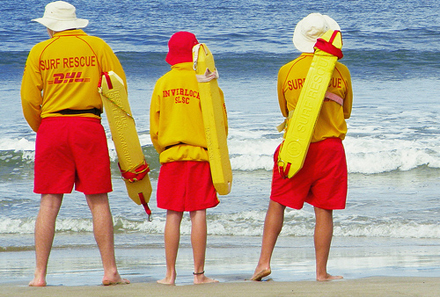Forecast cloudy for Surf Life Saving

Volunteers for Surf Live Saving Australia were spending too much time doing data entry and administration, so the organisation decided to introduce a raft of applications to automate processes for its members, systems that will be hosted in Fujitsu's infrastructure-as-a-service cloud.

(Credit: Life image by Not Happy Jan, CC BY-SA 2.0)
"Volunteer officers have severely reduced time to commit to administration functions in their clubs," Gary Daly, National IT Manager for Surf Life Saving Australia said.
"When they volunteer, they volunteer to do life saving, not data entry."
This problem became acute, and in 2008 the government allocated $4 million in funding to the project.
The main application is a self-service portal that brings together all of the information and applications that Life Savers might need, and puts them all in the one place. This means bringing information together from various legacy databases, according to Daly.
The project also aims to replace various paper forms that float around the clubs; for example, applications for awards or renewal of membership. This will all now be handled electronically.
Patrols will now also be able to report in via mobile phone rather than clogging up the radio waves. After being identified as legitimate, the person calling the voice recognition service will be asked if they could answer some questions, such as what time they started their patrol, what equipment is available and how many people are on patrol.
Requirements were nutted out and Fujitsu was signed on to the project in July 2009. In December 2010, Fujitsu asked Surf Life Saving if it would be open to having its systems hosted in the cloud.
"The hosted solution came up as good value for money for us," Daly said, adding that it would be a 25 per cent saving over owning the servers hosted in someone else's datacentre.
The applications are now being hosted on a development platform. When given the all-clear, they will go into the Fujitsu cloud. Daly expects this to occur in July or August, which — while Queensland and NT are still busy patrolling — is a quieter time for the organisation.
Over the next 12 months, Daly said that 150,000 members are expected to access the web portal to find information. The 43,000 volunteers are expected to be able to use the voice solution, which could handle 50 calls simultaneously.
In the future, Daly hopes to implement better asset management in the clubs by electronically tracking equipment such as jet skis. This isn't about equipment going missing, according to Daly, but more about knowing where the nearest equipment is in the case of a rescue.
"It's getting the nearest available resource nearest to the rescue in the fastest available time."
Daly said that the club also hopes to make public the information being collected by the systems. For example, if a patrol rings in from the beach and says that there are bluebottles, this can go directly onto the organisation's website for the information of beachgoers. Daly said that he also wants to be able to integrate weather and condition prediction information from the bureau of meteorology.
Daly's team consists of four IT personnel. Most of the work done for the organisation, such as web development, is done by outsourcers — of which Surf Life Savers has a stable of around six, according to Daly.